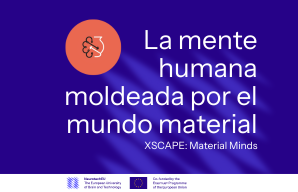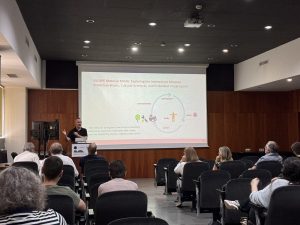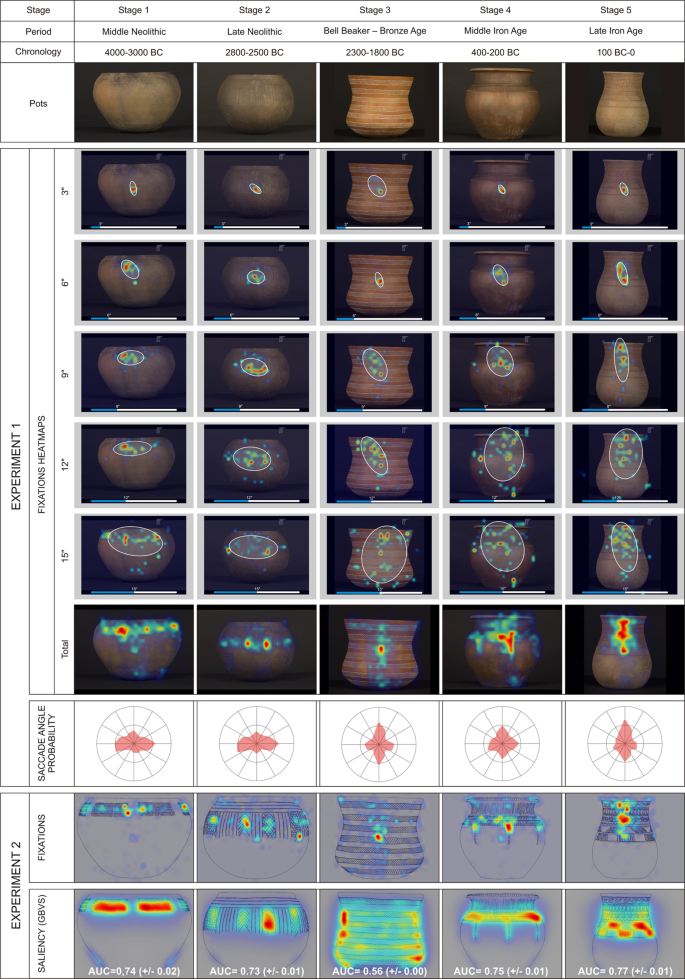The human mind shaped by the material world
10 September 2024
‘XSCAPE: material minds’ project studies the interaction between materials and people’s cognition
 The word ‘sobremesa’ only exists in Spanish. To refer to this concept in other languages, using more than one word is necessary. Similar examples have led some researchers to question whether the words we invent influence how we process information. This type of cultural difference, in turn, raises other questions about material differences: does the material environment influence the way we understand and process information? The ‘XSCAPE: Material Minds’ project aims to understand how people function when interacting with the material world constructed by humans so that other areas of study or technologies can apply this knowledge. As one of the project’s principal investigators, Johannes Müller –an expert in diversity and the evolution of social complexity in the human population– explains, the knowledge resulting from this study could help detect when people are being manipulated when interacting with the material world. “Citizens could benefit from being aware of such manipulations in television or the web in democratic societies,” perhaps “with a scientific basis,” adds the archaeologist.
The word ‘sobremesa’ only exists in Spanish. To refer to this concept in other languages, using more than one word is necessary. Similar examples have led some researchers to question whether the words we invent influence how we process information. This type of cultural difference, in turn, raises other questions about material differences: does the material environment influence the way we understand and process information? The ‘XSCAPE: Material Minds’ project aims to understand how people function when interacting with the material world constructed by humans so that other areas of study or technologies can apply this knowledge. As one of the project’s principal investigators, Johannes Müller –an expert in diversity and the evolution of social complexity in the human population– explains, the knowledge resulting from this study could help detect when people are being manipulated when interacting with the material world. “Citizens could benefit from being aware of such manipulations in television or the web in democratic societies,” perhaps “with a scientific basis,” adds the archaeologist.
XSCAPE is a project funded by the European Research Council Synergy Grant Program (ERC-SYG). It combines material archeology, visual neuroscience, and simulation-based studies. In addition to Müller, who is also a Professor at the Institute of Prehistory and Protohistoric Archaeology at Kiel University, the project is led by Luis M. Martínez Otero, a NeurotechEU researcher from the Institute of Neurosciences (a joint center of UMH and CSIC); Andy Clark, a Professor of Cognitive Philosophy at the University of Sussex; and Felipe Criado-Boado, Professor and director of the Institute of Heritage Sciences in Santiago de Compostela (INCIPIT-CSIC).
During their meeting at the Institute of Neurosciences, the experts explained that the three areas –neuroscience, philosophy, and archaeology– are working together to understand the changes in the use and style of building materials and thus develop a guide on perceptual behavior that can produce internal behavior models based on materials of the world. According to Criado-Boado, in archaeology, ‘materialism’ does not necessarily refer to scientific or construction materials. “Archaeology deals with very specific types of materials. For example, if we talk about the history of art or architecture, we could be talking about art, great works of art, or great buildings” adds Felipe Criado-Boado. Luis Martínez adds body tattoos as an example of another type of material that could be considered for study.

XSCAPE: Material Minds | @xscape_project
According to Martínez, XSCAPE starts its second phase: “We are moving into ethnographic work or case studies with Indigenous communities”. Currently, the researchers are working at five different European, African, and American places to study, with the eye-tracking technique to see how Indigenous people from other places observe the same object: what do they watch first, what do they pay more attention to, how much time they spend on small details… By studying the movement of the eyes over the object in question, researchers use the Bayesian Network to turn those seemingly random movements into cognitive patterns. That is, they investigate through the visualization of an object whether the culture and materials used in each place influence how we process the information we perceive.

Summary of our results showing that the pattern of spontaneous exploratory eye movements gradually transits from the earliest to the latest pots. | https://doi.org/10.1038/s41598-019-39661-w
This project, funded by the ERC-SYG program, has six years of coverage (2021-2027). The ERC’s goal is to reinforce the excellence, dynamism, and creativity of European research in response to the ambition to shift to an economic model based on smart, sustainable, and inclusive growth.



